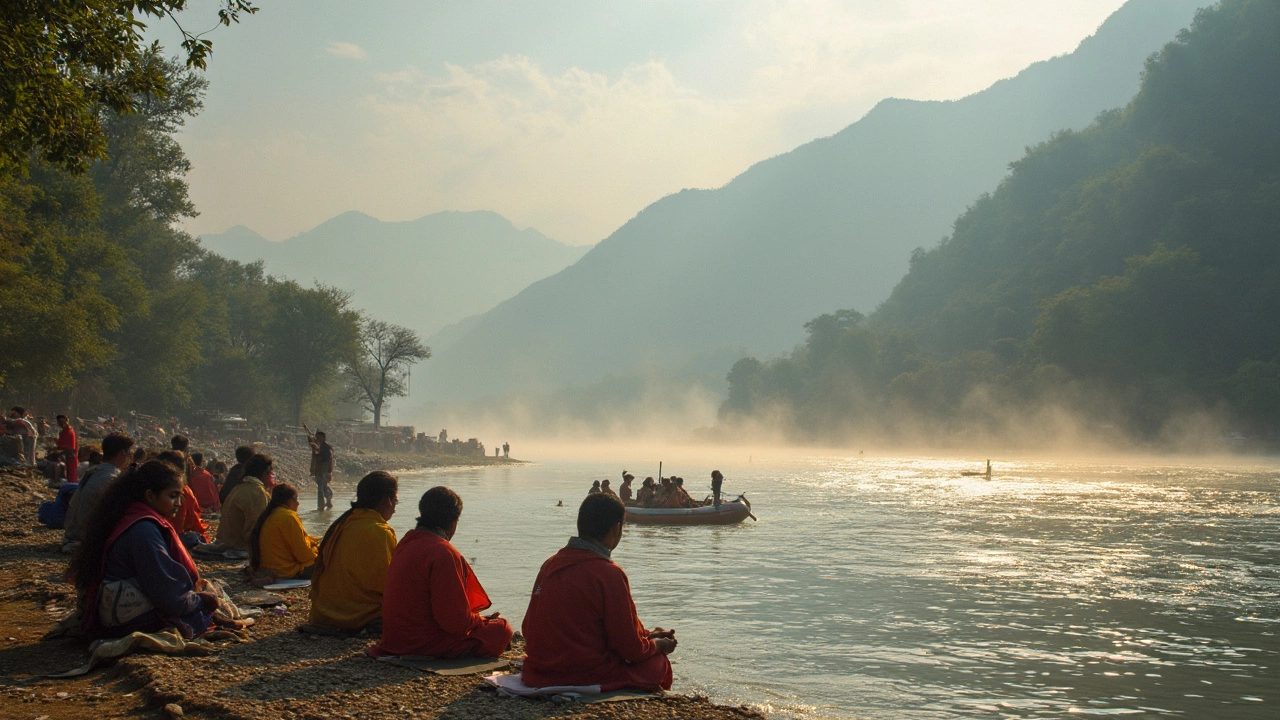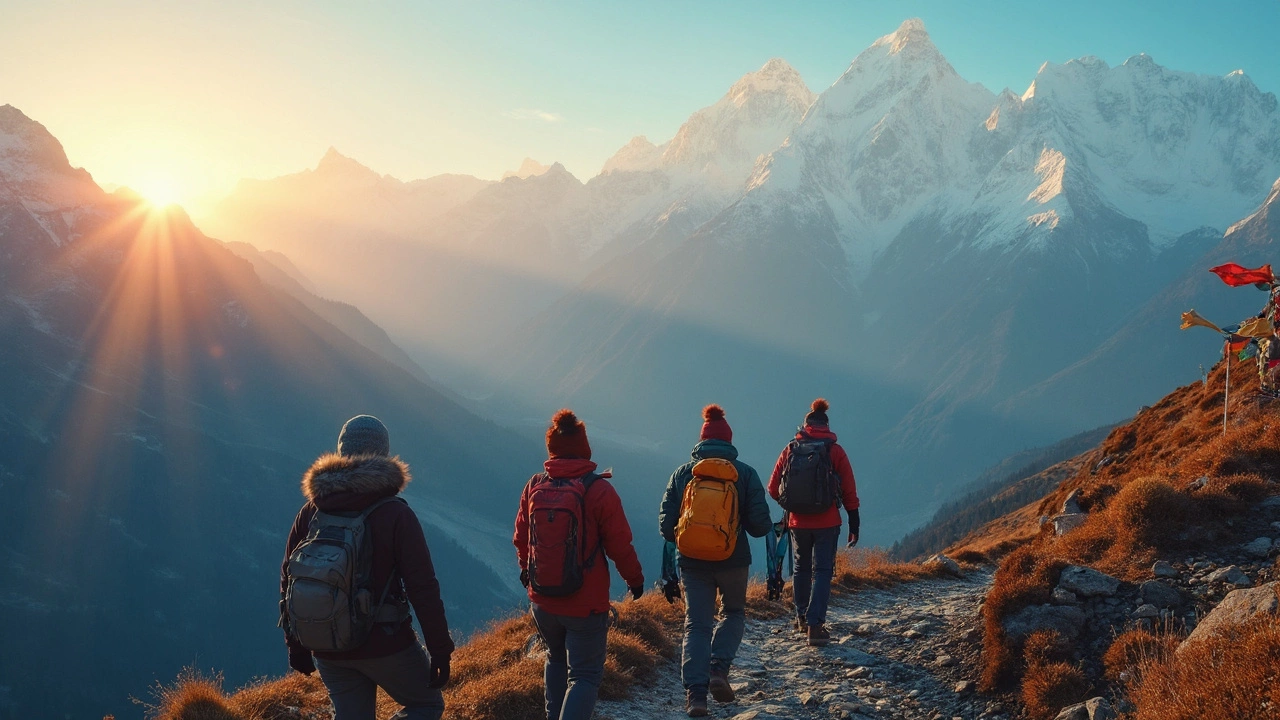India's Biggest Adventure: Exploring Rishikesh and Beyond for True Thrill Seekers

If you’ve ever felt that regular holidays just aren’t enough, India practically dares you to level up. Forget what you know about adventure parks or ziplining at a suburban retreat – we’re talking rapids so wild they turn veteran rafters into grinning kids, mountain trails so dizzying you question if your legs can really belong to you, and jungles that hum with sounds you can't even name. This country goes big with its adventures, from the madness of Himalayan snow to chaotic, holy rivers, offering a full spectrum of heart-pounding experiences. But among all these, one place stands out: Rishikesh, which has carved out a serious reputation for being the largest adventure in India.
The Unbeatable Appeal of Rishikesh: The Adventure Capital
So, what makes Rishikesh so special? It sits at the foothills of the Himalayas, where the mighty Ganges River crashes out of the mountains and thunders past ancient temples. This scenic city has earned its nickname, ‘Adventure Capital of India’, honestly. Every year, more than 100,000 people (according to the Uttarakhand Tourism Board's 2024 stats) show up with their hiking boots, waterproof GoPros, and buckets of adrenaline, ready for a challenge. The biggest draw? Whitewater rafting on the Ganges, where you’ll hit rapids named “The Wall” and “Roller Coaster.” When I tried it last year, I can still remember the chill of that first wave smacking me in the face—my daughter Evangeline still teases me about my high-pitched shriek.
And rafting is just the beginning. Rishikesh also dangles Asia’s longest river zip line above those wild waters. Fancy taking a literal leap of faith? India’s highest bungee jump—an eye-popping 83 meters—waits for you right outside the city. The jump masters here will count you down before you go flying off a platform, and yes, your legs will shake. Rishikesh hosts epic camping nights right on the riverbanks, group kayaking expeditions that mimic Himalayan explorers, and treks to hidden caves and roaring waterfalls. Don’t be surprised if you find yourself sitting around a campfire with travelers from Australia to Zurich, swapping stories about wipeouts and close calls.
Even when the river is sleepy during the monsoon lull, there’s plenty going on. Yoga is practically in the city’s DNA—you can balance adrenaline with meditative calm in one sunrise session. The mix is what seals Rishikesh’s crown: nature, danger, spirituality, and a solid dose of fun. And with more than 40 operators offering everything from cliff jumping to rock climbing, you won’t be left wanting. Tip: If you try rafting between September and June, the water is at its wildest, and crowds are more chilled out in the shoulder months.
Bigger Than Rishikesh? True Himalayan Expeditions
If you’re wired like me and need something wilder, the Himalayas themselves are the ultimate backdrop. Many travelers swap the comfort of adventure resorts for multi-day treks across seriously tough terrain. Take the Chadar Trek in Ladakh—it winds over the frozen Zanskar River, where temperatures can plunge below -20°C. The risks are real. Last season’s trek was shortened for safety after sudden ice melts. But for hardy souls, the payoff is otherworldly beauty and a sense of accomplishment that sticks with you. The geography here is no joke. The Himalayas dominate the north, stretching like a jagged spine and claiming eight of the world’s fourteen 8,000m summits. Everest’s slightly lower cousins—Kanchenjunga, Nanda Devi, and Kamet—draw climbers from every continent, and the Indian Mountaineering Foundation tracks over 2,400 organized expeditions each year (2023 data). It’s not just about reaching peaks; varied circuits like the Roopkund ‘Skeleton Lake’ trek or trekking through Spiti Valley’s moonlike landscapes give you as much mystery as muscle burn.
Some of these treks aren’t walk-in-the-park jaunts; you need real prep. Think altitude sickness pills, proper gear, and training at least a couple months out. Guided trips are the way most people go—these crews know the mountains like their own backyard and keep safety at the top. For the record, Indian rescue and first aid standards have shot up over the last decade, partly after some high-profile accidents in 2018 sparked reform. And if trekking feels too slow? Paragliding over Bir Billing—considered the best site in Asia—is pure, soaring freedom. Last time I went, the early morning mist burned off just as we launched, turning the green valleys below into a patchwork you’d expect from an airliner, not a parachute harness.
If you’re thinking of visiting, book key experiences well ahead—popular treks have only a couple hundred permits per season to keep the trails wild. And yes, most guides are fluent in English (plus at least two or three other languages), so you won’t get lost in translation while gasping for air above 5,000m. Pack light, leave space for a thermal or two, and don’t underestimate the Himalayas—they’re the real deal. Want a stat to back that up? Over 40% of international trekkers coming to India list the Himalayas as their main draw, according to the Ministry of Tourism’s 2023 survey.

Indian Adventure Sports: From Dangling to Diving
Sure, Rishikesh and the Himalayas get the headlines, but India hides adventures everywhere if you know where to look. Down south, Dandeli, Karnataka delivers whitewater rafting on the Kali River that’s less crowded than Rishikesh but no less wild. The Andaman Islands—India’s tropical paradise—serve up scuba diving among coral reefs that National Geographic called “the most biodiverse in Asia” last year. I tried my first dive here and almost mistook a cownose ray for a flying carpet; Adelaide still rolls her eyes at my fish stories. In the Thar Desert, you can ride camels into the sunset and try sandboarding, which feels just like snowboarding, only warmer and, honestly, a lot crunchier.
The list goes on. Caving in Meghalaya’s limestone labyrinths, mountain biking in Manali, hot air ballooning in Jaipur, and surfing in tiny fishing towns like Kovalam—each serves up its brand of adventure. Even wildlife safaris in Madhya Pradesh or Ranthambore can leave your heart racing when you spot a wild tiger or a herd of elephants strutting through the grass. A huge plus: India’s adventure operators have stepped up their safety game big time, with more oversight, better equipment, and mandatory insurance for higher-risk activities since 2022. If you’re keen on monitoring your risk, most companies provide on-the-spot first aid and emergency supplies (just ask before you book, and check for certifications from the Adventure Tour Operators Association of India).
Here’s a quick table comparing popular Indian adventure spots and what you can do there:
| Location | Main Activity | Best Season | Adventure Level |
|---|---|---|---|
| Rishikesh, Uttarakhand | Whitewater Rafting, Bungee Jumping | Sep–June | Moderate–High |
| Bir Billing, Himachal Pradesh | Paragliding | Mar–June, Sep–Nov | High |
| Andaman Islands | Scuba Diving | Oct–May | Moderate |
| Ladakh, Jammu & Kashmir | Chadar Trek, Mountaineering | Jan–Feb (Chadar), May–Oct (treks) | Extreme |
| Dandeli, Karnataka | Rafting, Jungle Safari | Oct–Mar | Easy–High |
Want a tip? Smaller towns often give a more personal vibe, less queueing, and often, lower prices. Talk directly to local guides; they know secret waterfalls or offbeat cave entrances that don’t show up on the generic travel sites.
Making the Most of Your Indian Adventure: Top Tips and Surprises
Your first trip can be overwhelming. Start by figuring out if you’re after pulse-racing danger or more laidback excitement. First-timers should always book with licensed operators—Google reviews are your friend (don’t trust ones with only stock photos). If you have kids, like I do with Evangeline, most places offer junior versions of sports—so no one misses out (rafting with my 10-year-old is a story I’ll never forget, especially when she wanted to go again… and again).
Pack smarter, not heavier. In the Himalayas, every kilo you carry winds up on your back for miles—ditch the nonessentials. Sun protection matters, even in the snowy peaks, because the glare is next level. And don’t forget power banks; out here, there are more monkeys than charging points. Most Indian adventure hotspots are cash-friendly, but keep some digital payment options handy—UPI works nearly everywhere now. Healthwise, drink only bottled or filtered water, and keep meds like paracetamol and antihistamines in your bag—trust me, you don’t want to be searching pharmacies after a bee sting mid-trek.
Another thing: travel insurance is a must, not a maybe. Go for plans that cover treks above 4,000m, water sports, and emergency evacuation (costs are still much lower than in European adventure spots). Combine a few different activities if you can—your body gets to recover between high-intensity days, plus you’ll never get bored. If you’re traveling between June and September, expect monsoon showers; pack quick-dry everything and welcome the occasional mud bath as a bonus experience.
Last, connect with your guides and fellow adventurers. They often have the wildest stories and the best hacks, from avoiding leeches to snagging the front row on a flying fox. And if you find yourself nervously eyeing that bungee platform, remember: there’s no adventure in comfort zones. India’s got hundreds of ways to prove it.